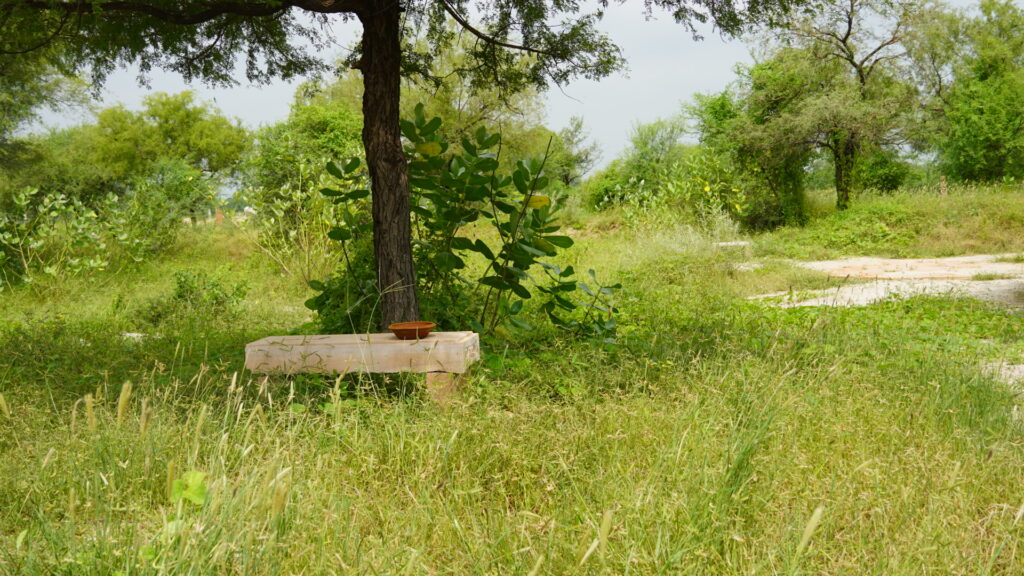The project began with the phased removal of Prosopis juliflora, a thorny, fast-growing invasive species that had taken over large swathes of land. Its removal opened up space for light, air, and native species to return. To stabilize and rehabilitate the soil, and to counter excessive salinity, drought-tolerant millets—such as traditional varieties of Pearl millet, Foxtail, Proso, Barnyard, Kodo, and Kangni—along with wild native grasses such as Dichanthium annulatum, Cenchrus ciliaris, Chloris virgata, Eragrostis spp., Tragus spp., and Dactyloctenium aegyptium were broadcast sown. These fast-growing grasses were not harvested. Instead, they were allowed to mature and fall on their own, forming a thick mulch carpet; the seeds were naturally resown into the soil for the next season. This process added organic carbon and helped retain surface moisture, creating more favourable conditions for microbial life. All of this was a one-time intervention that kickstarted regeneration in the soil.















